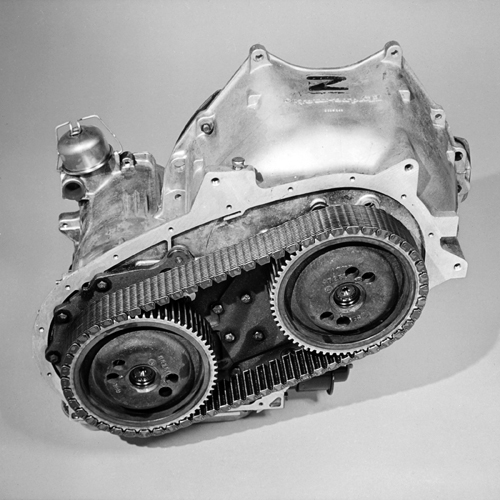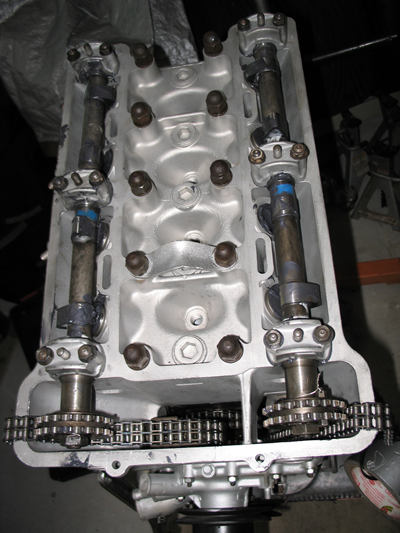I am a fan on new technology, but it also has to prove itself "Long Term" in the right application. Of course, the military does not really care about that anyway. Just look at the condition of the 10-12 year old RIB's and QSB 5.9's that are coming on the used engine market these days. All run hard and put away wet.Love the business though that comes our way because of it.
To me, the jury is still out on POD drives. All I see is very high maintenance costs vs. very low hour annual use. Plus, if used in heavier boats that run at hull speeds for long distances (called "cruising") , MPG seems dismal at best compared to convention running gear w/ big props.
Tony
I am never a first generation adopter. I want it proven. Show it to me in real use over a long trial period. Whether it's computer technology, engines or boat designs, I feel the same. Someone else can work through the initial problems. Show me some diesel outboards on utility boats that I can see and touch, getting heavy use for the last two years and then I might listen.
Now, as to pods, I don't personally want them but don't share your "jury still out". Pods are a long established technology. They've been in the commercial market for decades and now IPS and Zeus have been around in the recreational market for a long time. Some builders I respect greatly, such as Delta Powerboats, use them very successfully.
As to heavier boats that run at hull speeds for long periods of time (called "slow cruising"), that is clearly not the pod market and not the appropriate application. I'm personally not aware of much of that being done.
Then as to pods in the lighter recreational boat market, I think much of what I've seen is pods being sold to inexperienced boaters and, therefore, the maintenance issues being greatly increased. I see a lot of pods damaged but with the lack of experience by the operator they would have damaged any type of propulsion system. Pods are going to have worse records when sold to first time boaters and cruisers. Now, I think many of their sales are strictly gimmick sales. Joysticks have sold more pods than anything else, because docking fears prevail. The problem is there is more to boating than docking, much more, plus joysticks are available now for any type propulsion system.
Our most recent purchased boat offered pods or conventional. The first negative then I saw toward the pods was that the boat wasn't really designed for them. The best pod applications are boats build for them from the ground up. Now, we intended to use this boat on the loop and I just saw the risk of damage to the pods greater (draft slightly greater) plus the available expertise along the route to quickly make repairs or replace pods. In terms of performance, the pods had a slight speed advantage, but we upgraded engines to mostly offset that. At cruising speed (not hull speed but 20-26 knots) the pods were far more efficient. That just didn't excite me. Then also, the pods offer the potential of space savings and added space for other things, but in this boat, that was not realized. In fact, they came with a smaller fuel capacity and no greater space benefit, since the engine room dimensions were already fixed. As to your findings on fuel, even at 10 knots and less, the pods on this boat used less fuel than the conventional drives. Now, they didn't match a small diesel with big props but that's not the nature of the boat or their intended use.
So, I don't think the verdict on pods is still out. I think they are what they are and proven over time. They are not the failures some predicted, but they haven't taken over the world as others predicted. A huge limiting factor in market share has been that Zeus is limited by Cummins engine sizes and, therefore, has to keep adding engines to compete in even the 60' range. IPS goes further but with Sea Ray the largest builder of boats in that range, and their Zeus marriage, it has limited pods in the Express boat and day cruiser market. I think Zeus for Brunswick was strictly a defensive measure as competitors were offering IPS. I know people with vast amounts of experience with pods on many different boats who are totally sold on them. I also know novice boaters who have been through several pods on their two year old boat. Then I know some builders who were early into the pod world and are IPS all the way.
One thing that has impacted pods negatively in market share is that as they were gaining popularity and perhaps had potential in many cases in lieu of inboard outboards and not just inboards, the I/O market was shrinking while the outboard market was growing. Small SF's and CC's were initially targeted as pod applications. Well, small SF's have shrunk as to their size of the market and the growing share has gone to outboard powered CC's increasing in size.







